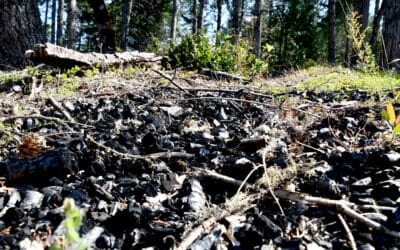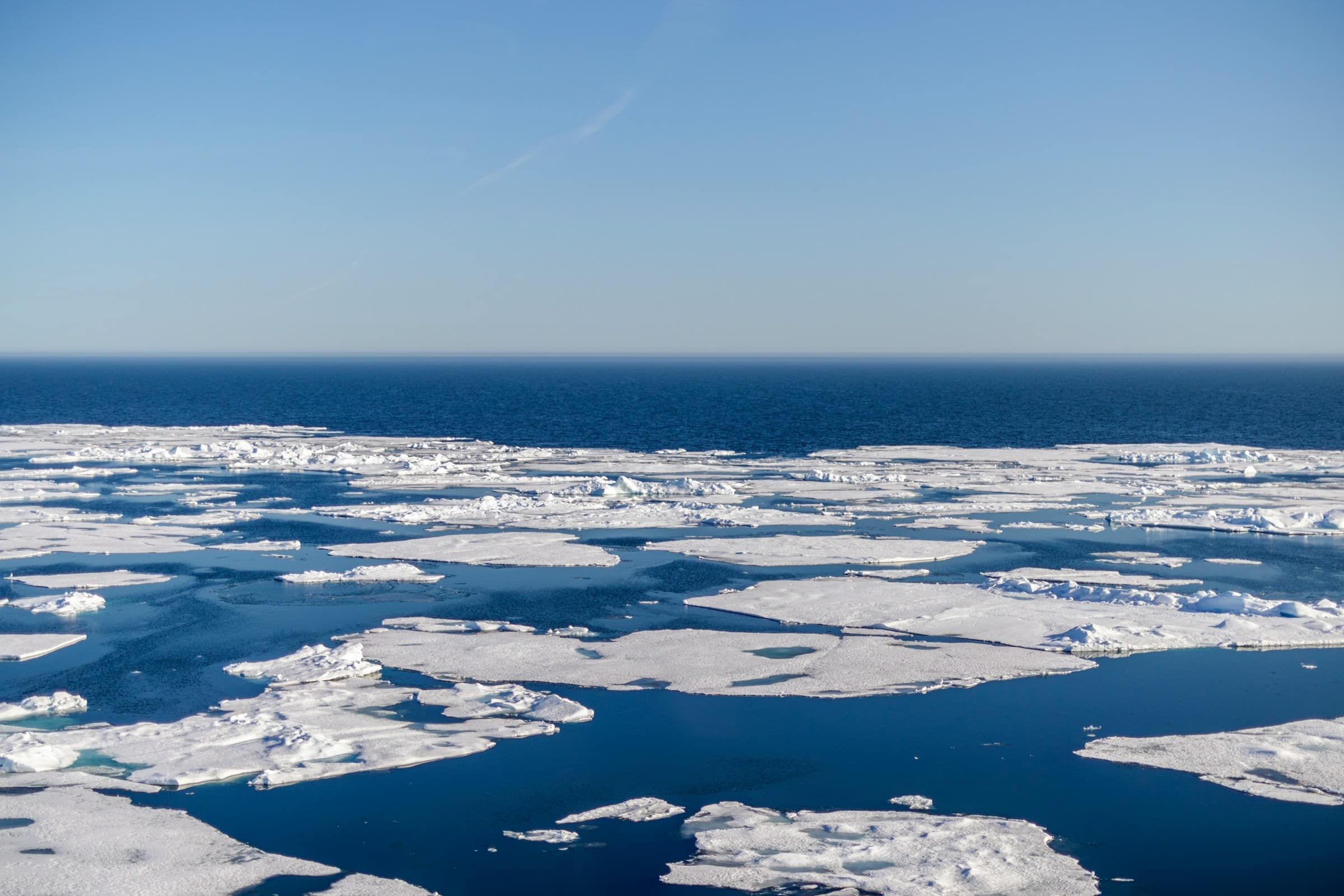By Anja Chalmin
The new year has begun with new geoengineering approaches, plans, research activities and funding spanning all natural environments – land, sea and air – and there are even ideas that stretch into space. Regardless of the natural environment in which they are to be deployed, what all geoengineering proposals have in common is that they do not address the root cause of climate change – the rising CO2 concentration in the atmosphere, but only attempt to temporarily alleviate some of the symptoms of climate change. What the various geoengineering approaches also have in common is that their deployment is associated with numerous and sometimes unpredictable risks, for the environment, but also at the societal level.
Geoengineering schemes are technical proposals, most of which have been around for many years, but have largely remained hypothetical proposals. If developed at all, the technologies are still in their infancy and are often associated with high resource consumption, significant costs and high energy consumption. Nevertheless, they are promoted by some proponents as solutions that work – which risks giving a false sense of security and potentially leading to a loss of time and resources for real solutions that tackle the causes of climate change – like a rapid transition away from fossil fuels.
Part one of this first quarterly review for 2022 looks at new developments in weather modification (WM). WM refers to various techniques, such as cloud seeding, that attempt to enhance or suppress precipitation, for example to combat droughts. WM aims to change local or regional weather and precipitation, but not overall climate patterns. And because WM technologies are thought to have only local or regional impacts, weather modification is often not considered geoengineering. However, WM techniques are important precursors of today’s geoengineering technologies, e.g., there is overlap with solar radiation management (SRM) technologies, which also aim to put particles into the atmosphere.
Because of the overlap with SRM, this quarterly review will also feature scientific voices looking back at 70 years of WM field trials and operations by now. The result is that the effectiveness of WM is not statistically proven. Moreover, WM is very expensive and has already led to regional conflicts and bilateral disputes. Due to the potential for conflict, the Expert Team on Weather Modification of the World Meteorological Organization recently recommended international regulatory guidelines for WM.
Weather modification – current developments
China has more than doubled the land area under weather modification (WM) activities over the past decade. At the end of December 2021, the Chinese Meteorological Administration (CMA) opened a nationwide Weather Modification Centre. This Centre will lead the WM activities announced by the Chinese government in late 2020 – it is the world’s largest WM programme, with WM activities to be carried out over more than 60 % of China’s land area – equivalent to more than six million square kilometres. On the day of the Centre’s opening, the CMA announced that WM operations are currently already being conducted on more than 5.5 million km² in China. These ongoing interventions aim to increase rainfall on 5 million km² and prevent precipitation in the form of hail on 0.5 million km². There is no publicly available information on the budget that the Chinese government has made available for the implementation of these large-scale plans.
The Sangre de Cristo Mountains near Taos, New Mexico, USA, were the site of a public hearing late last year on proposed cloud seeding activities. The cloud seeding activities were to be carried out by the Colorado-based company Western Weather Consultants and were aimed at increasing the amount of snow in the Sangre de Cristo Mountains to counteract a severe drought. These plans were dropped after the public hearing, because “well over half of public comments on the webinar opposed the plan. Callers said silver was a toxic heavy metal that could get into groundwater and the soil. “The solutions are to stop the destruction which causes us to not have rain and water, not to increase further destruction and further manipulation,” said Marquel Musgrave, a member of the Nambe Pueblo Native American community.”
In January 2022, the United Arab Emirates (UAE) announced funding for two new research projects under the fourth round of the UAE Research Program for Rain Enhancement Science (UAEREP). The first project will be conducted at the University of California, San Diego, USA, and aims, inter alia, to determine the optimal timing and location for cloud seeding. The second project, carried out by the Finnish Meteorological Institute and the UK’s University of Reading, continues to research precipitation enhancement with electric charges and nanomaterials. Researchers at the University of Reading have been investigating the use of electric charges to promote droplet formation since 2017, as part of the second UAEREP funding round. The outcomes of the project were published in January 2022. The research results suggest that charge differences can strengthen the attractive forces between individual droplets and make raindrops grow. To promote these attractive forces and the formation of heavier droplets to induce rain – the clouds are to be supercharged with electricity. In 2021, the project has involved field experiments in which drones equipped with ionizers were sent into clouds to release positive and negative charges. So far, the UAE has mainly used silver iodide (AgI) and dry ice (frozen CO2) for cloud seeding. Cloud seeding has been carried out in the UAE since the 1980s and in the meantime, the National Centre of Meteorology has five aircrafts at its disposal for this purpose as well as a facility to produce and trial seeding agents.
Weather modification – lessons learned after 70 years of deployment
The use of condensation nuclei to promote raindrop formation has been the subject of practical research for 70 years. One of the pioneers in weather modification (WM) is Project Cirrus, which tested cloud seeding with various condensation nuclei, including silver iodide (AgI), dry ice (frozen CO2) and sea salt particles. The first time Project Cirrus tested airborne cloud seeding was in 1949, when 1.5 kg of crushed dry ice were released from an aircraft into a cloud. In addition to airborne cloud seeding, the project developed and tested smoke generators to transport AgI into clouds from the ground.
What is the state of weather modification after 70 years of research and deployment in more than 50 countries worldwide?
William Cotton, professor emeritus of meteorology at Colorado State University, has been studying weather modification for half a century and summarized his experience on the subject in March 2022. He states that “most scientific studies aimed at evaluating the effects of seeding cumulus clouds have shown little to no effect” and adds that “cloud seeding isn’t as simple as it sounds, and it might not be as promising as people wish. Cloud seeding experiments that produce snow or rain require the right kind of clouds with enough moisture, and the right temperature and wind conditions. The percentage increases in precipitation are small, and it’s difficult to tell when snow or rain fell naturally and when it was triggered by seeding.”
An example scientific study is the Weather Modification Pilot Project in Wyoming, which was scientifically monitored over a period of six years (2008-2013) and showed an increase in precipitation of about three percent. Since this value does not provide sufficient statistical evidence, the scientists cannot determine whether the three-percent increase is due to cloud seeding measures or weather fluctuations.
Israel has tested and used cloud seeding for more than 50 years with the aim of increasing precipitation. The Israeli weather modification programme was scientifically monitored and discontinued in January 2021 because the effects of cloud seeding on rainfall were not statistically measurable and the programme was very costly.
Lulin Xue, chief scientist at the Chinese Hua Xin Chuang Zhi Science and Technology LLC and participant in the third round of the UAE Research Program for Rain Enhancement Science, explained some of the practical problems of weather modification in a newspaper interview in January 2022. One of the main problems, he says, is that no two clouds are alike. This may lead to cloud seeding with too many condensation nuclei – “the whole process can backfire, meaning less rain would fall than would have otherwise occurred if there had been no intervention”. The interview illustrates that even after 70 years of research, cloud seeding has not been mastered. Computer simulations conducted by scientists are supposed to change that, “however, they [scientists] are unsure if they will ever fully master cloud seeding”.
The Expert Team on Weather Modification of the World Meteorological Organization (WMO) also describes knowledge gaps in its Report on Global Precipitation Enhancement Activities, among others, major deficiencies in models used for cloud seeding simulations as well as knowledge gaps in the formation of precipitation and other cloud and precipitation processes. The report also points out that cloud seeding cannot create clouds “out of thin air” in a dry atmosphere, i.e., cloud seeding cannot mitigate droughts. This finding is echoed by Katja Friedrich, an associate professor of atmospheric and oceanic sciences at the University of Colorado, Boulder: “If there are no clouds in the sky, cloud seeding will lead to bupkis.”
In January 2022, Andrea Flossmann, head of the WMO expert team on Weather Modification, pointed out that weather modification activities can lead to geopolitical conflicts. This problem is not a hypothetical one. In 2018, for example, Iran accused Israel of stealing water through cloud seeding – accusations that Iran also made against other neighbouring countries. In January 2022, Hanelle Korhonen, research professor at the Finnish Meteorological Institute and participant in the second round of the UAE Research Program for Rain Enhancement Science, has raised the following question: “There is X amount of water in the world. If you make the clouds rain in one place, is the water missed somewhere else?” Andreas Flossmann comments: “the atmosphere has no walls […]. What you add may not have the desired effect in your vicinity, but by being transported along might have undesired effects elsewhere.” Dhanasree Jayaram, a professor in the Department of Geopolitics and International Relations at India’s Manipal Academy, expressed concern about China’s weather modification plans in January 2022: “I think what we’ve seen from China – and what we’re going to see from China – is weather-modifying technology that’s used more often and more aggressively and more unilaterally, and the truth is we really don’t know what that means for various ecosystems […]. The one thing we do know is that atmosphere is not divided by political boundaries.” She views China’s large-scale weather modification plans as a potential source of conflict between China and neighbouring regions, with possible security implications for neighbouring countries, including India, and other South and Southeast Asian countries. In the past, even small-scale weather modification projects have led to conflicts, for example in the Ecuadorian province of Cotopaxi or in Puebla, Mexico.
According to Flossmann, there is currently no international body that regulates weather modification activities, apart from the Convention on the Prohibition of Military or Any Other Hostile Use of Environmental Modification Techniques (ENMOD), which prohibits the military use of weather modification. Military use of weather modification has already taken place, for example during the Vietnam War. In January 2022, Flossmann told the press, that “her team has advised the World Meteorological Organization to think about such international regulatory guidelines”.
Currently after 70 years of weather modification research, it seems that several national research centres and leading scientists are deeply sceptical about the technical success of weather modification. Politically, there is no international body regulating weather modification and experts have raised concerns about the dangerous potential for weather modification to be used in geopolitical conflicts, with existing weather modification experiments (though unsuccessful) already causing regional tensions.



